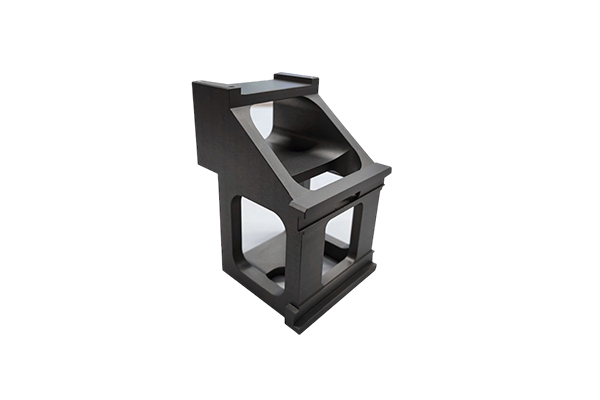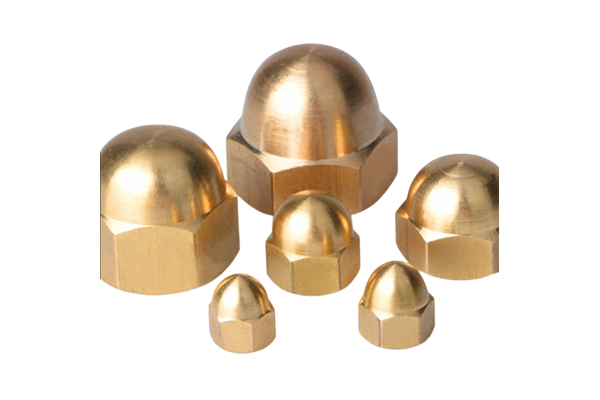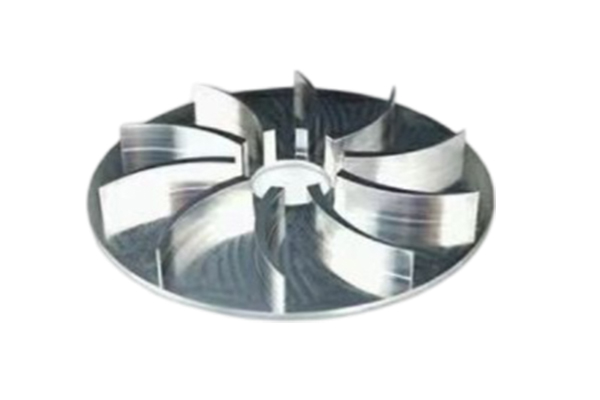How to ensure a stable connection in weightless conditions in the design of aerospace hinge link parts?
Release Time : 2025-01-15
It is crucial to maintain a stable connection in weightless conditions in the design of aerospace hinge link parts, because the spacecraft is in a microgravity environment when operating in space, and the instability of any connecting parts may lead to serious consequences.
1. Material selection
High-strength materials: Select materials with high strength and rigidity (such as titanium alloy, aluminum alloy, etc.), which can maintain their structural integrity in a microgravity environment and are not prone to deformation or breakage.
Corrosion-resistant materials: Spacecraft may be exposed to extreme temperatures and corrosive environments in space, so choosing corrosion-resistant materials (such as stainless steel, nickel-plated alloy, etc.) can extend the service life of components and ensure the stability of the connection.
2. Structural design
Multiple connection mechanisms: Design multiple connection mechanisms (such as bolts, pins, buckles, etc.) to increase the reliability of the connection. Even if one connection mechanism fails, the other mechanisms can still maintain the stability of the connection.
Self-locking mechanism: Use a self-locking mechanism (such as a wedge lock, a spiral lock, etc.), which can automatically lock in weightless conditions to prevent the connection parts from loosening or falling off.
Redundant design: Redundant design is adopted in key parts, that is, a backup connection mechanism is set up. When the main connection mechanism fails, the backup mechanism can take over immediately to ensure the continuous stability of the connection.
3. Kinematic analysis and simulation
Kinematic analysis: Detailed kinematic analysis is carried out in the design stage to simulate the motion trajectory and force conditions of the components under weightlessness conditions to ensure that the connection components can remain stable under various working conditions.
Computer simulation: Use computer simulation technology (such as finite element analysis, multi-body dynamics simulation, etc.) to predict the behavior of connection components in a microgravity environment, optimize design parameters, and improve the stability of the connection.
4. Manufacturing and assembly accuracy
High-precision manufacturing: Use high-precision manufacturing processes (such as CNC machining, laser welding, etc.) to ensure the dimensional accuracy and surface quality of parts, reduce assembly errors, and improve the reliability of connections.
Precise assembly: During the assembly process, use high-precision measuring tools (such as three-coordinate measuring machines, optical measuring instruments, etc.) to ensure the precise alignment and tightening of each component to avoid unstable connections caused by assembly errors.
5. Testing and Verification
Ground Simulation Test: Conduct microgravity simulation tests on the ground (such as parabolic flight, drop tower experiment, etc.) to verify the performance of the connection components under weightlessness conditions, and find and improve deficiencies in the design.
Spacecraft Comprehensive Test: During the overall test phase of the spacecraft, the hinge link parts are subjected to comprehensive performance tests, including vibration tests, thermal vacuum tests, etc., to ensure their stability and reliability in the actual space environment.
6. Maintenance and Inspection
Regular Inspection: During the operation of the spacecraft, hinge link parts are regularly inspected (such as ultrasonic inspection, X-ray inspection, etc.) to promptly detect potential damage or looseness, and repair or replace them.
Automatic Monitoring System: Install an automatic monitoring system on the spacecraft to monitor the status of hinge link parts in real time. Once an abnormality (such as looseness, breakage, etc.) is found, an alarm is immediately issued and corresponding measures are taken.
Through the above measures, the design of aerospace hinge link parts can ensure stable connection under weightlessness conditions and ensure the safe operation of spacecraft in space. This design not only improves the reliability and life of the spacecraft, but also provides solid technical support for future deep space exploration and complex space missions.
1. Material selection
High-strength materials: Select materials with high strength and rigidity (such as titanium alloy, aluminum alloy, etc.), which can maintain their structural integrity in a microgravity environment and are not prone to deformation or breakage.
Corrosion-resistant materials: Spacecraft may be exposed to extreme temperatures and corrosive environments in space, so choosing corrosion-resistant materials (such as stainless steel, nickel-plated alloy, etc.) can extend the service life of components and ensure the stability of the connection.
2. Structural design
Multiple connection mechanisms: Design multiple connection mechanisms (such as bolts, pins, buckles, etc.) to increase the reliability of the connection. Even if one connection mechanism fails, the other mechanisms can still maintain the stability of the connection.
Self-locking mechanism: Use a self-locking mechanism (such as a wedge lock, a spiral lock, etc.), which can automatically lock in weightless conditions to prevent the connection parts from loosening or falling off.
Redundant design: Redundant design is adopted in key parts, that is, a backup connection mechanism is set up. When the main connection mechanism fails, the backup mechanism can take over immediately to ensure the continuous stability of the connection.
3. Kinematic analysis and simulation
Kinematic analysis: Detailed kinematic analysis is carried out in the design stage to simulate the motion trajectory and force conditions of the components under weightlessness conditions to ensure that the connection components can remain stable under various working conditions.
Computer simulation: Use computer simulation technology (such as finite element analysis, multi-body dynamics simulation, etc.) to predict the behavior of connection components in a microgravity environment, optimize design parameters, and improve the stability of the connection.
4. Manufacturing and assembly accuracy
High-precision manufacturing: Use high-precision manufacturing processes (such as CNC machining, laser welding, etc.) to ensure the dimensional accuracy and surface quality of parts, reduce assembly errors, and improve the reliability of connections.
Precise assembly: During the assembly process, use high-precision measuring tools (such as three-coordinate measuring machines, optical measuring instruments, etc.) to ensure the precise alignment and tightening of each component to avoid unstable connections caused by assembly errors.
5. Testing and Verification
Ground Simulation Test: Conduct microgravity simulation tests on the ground (such as parabolic flight, drop tower experiment, etc.) to verify the performance of the connection components under weightlessness conditions, and find and improve deficiencies in the design.
Spacecraft Comprehensive Test: During the overall test phase of the spacecraft, the hinge link parts are subjected to comprehensive performance tests, including vibration tests, thermal vacuum tests, etc., to ensure their stability and reliability in the actual space environment.
6. Maintenance and Inspection
Regular Inspection: During the operation of the spacecraft, hinge link parts are regularly inspected (such as ultrasonic inspection, X-ray inspection, etc.) to promptly detect potential damage or looseness, and repair or replace them.
Automatic Monitoring System: Install an automatic monitoring system on the spacecraft to monitor the status of hinge link parts in real time. Once an abnormality (such as looseness, breakage, etc.) is found, an alarm is immediately issued and corresponding measures are taken.
Through the above measures, the design of aerospace hinge link parts can ensure stable connection under weightlessness conditions and ensure the safe operation of spacecraft in space. This design not only improves the reliability and life of the spacecraft, but also provides solid technical support for future deep space exploration and complex space missions.







